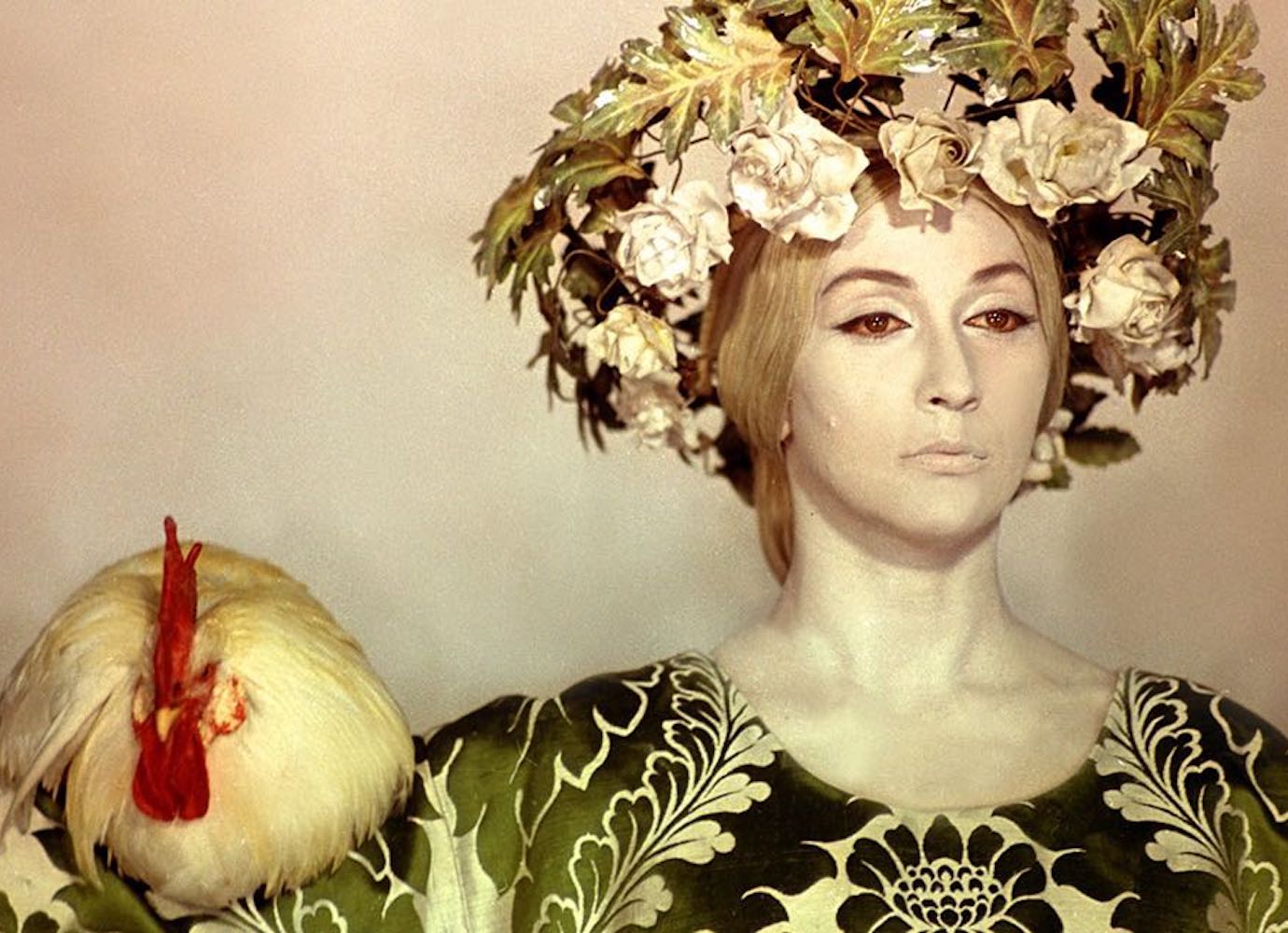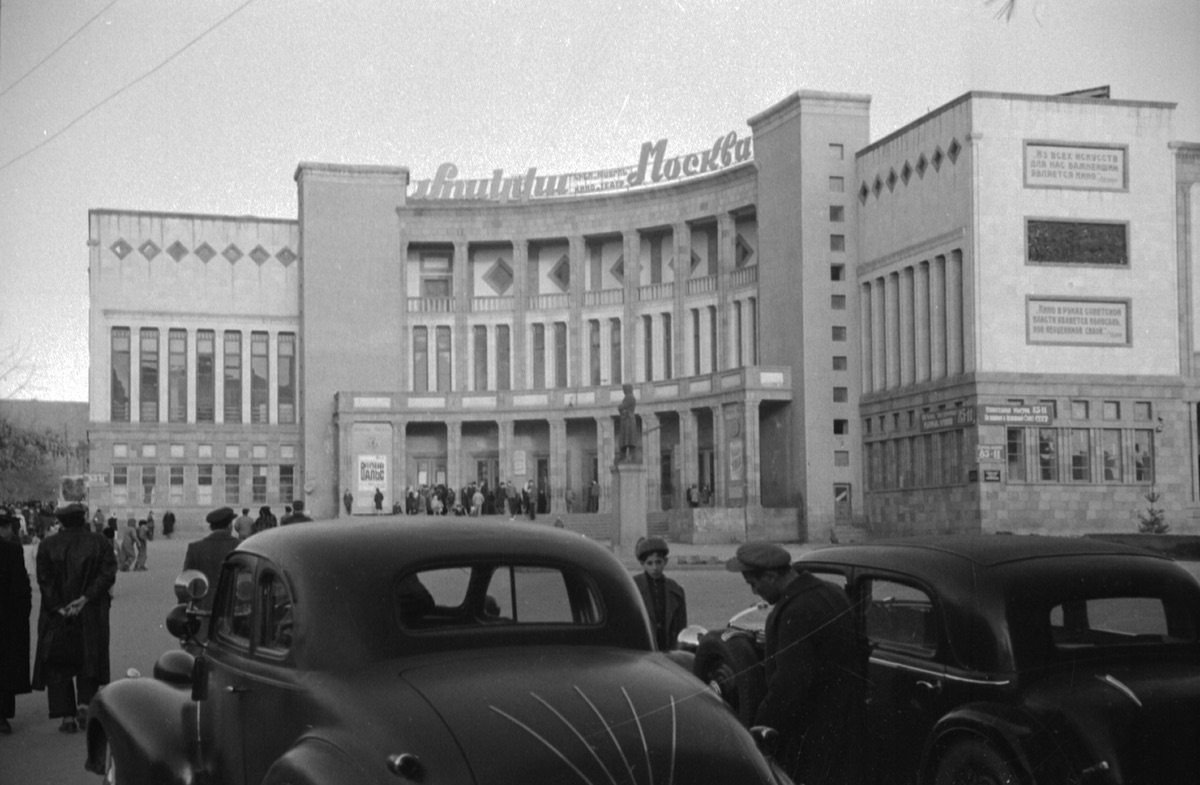‘Films are vulnerable’: the battle to preserve Eastern Europe’s analogue movies
Inside the darkness of the cinema, the difference between watching a movie digitally and seeing it projected on film can only be noticed in subtle clues. You might notice small dots and tiny lines on an image, or perhaps some inconsistencies in the colour or overall fading.
These imperfections spark a unique form of analogue magic. They remind us of the materiality of the work — and that no two screenings from a single print are ever exactly the same.
Fragile film stock is prone to wear and tear: scratches, burns, and rips can happen in the hands of a projectionist or in a faulty projector
But there is also a downside. Unless archivists and preservationists intervene, the physical film will become more damaged with every screening: the scratches will become larger, the specks of dust will become denser, and the film will eventually fade until the original colours are unrecognisable.
In a world where most viewers experience movies increasingly online, and fewer directors choose to shoot in analogue, it is also becoming harder to take care of the movies that already exist on film. Fragile film stock is prone to wear and tear: scratches, burns, and rips can happen in the hands of a projectionist, within a faulty projector, or during transportation. Even when film is handled with care in the theatre itself, it still needs to be preserved and stored in special conditions. Older, silent-era pictures were shot on cellulose nitrate, a highly flammable material (remember the ending of Inglourious Basterds?). Newer cellulose acetate-based films are less of a safety hazard, but still require temperature and humidity to be controlled so that they don’t start to degrade to a condition known as the vinegar syndrome.
Still from The Lighthouse (2006)
“Films are vulnerable,” says Daniel Bird, a France-based cinema specialist. For the past couple of decades, he has worked as a curator and programmer, helping organise and produce complicated restorations of rare films from Eastern Europe and Central Asia. Despite his original academic background in psychology and philosophy, he is now less involved in the critical analysis of the works and more interested in “the material aspect, the film as a physical object, a film which is produced by an institution […], which is manufactured, and which is then archived, which is bought, which is sold, which is lost, which decomposes.”
Films made in Eastern Europe and Central Asia are often more vulnerable to decay than their Western counterparts, generally due to a lack of funding. Somewhat counterintuitively, it is often the films that were produced after the fall of the Soviet Union that suffer most. Under socialism, films belonged to the state and were safely stored and maintained with public money — but this system soon disappeared in the capitalist era. The Lighthouse (2006), the debut feature of an Armenian-Russian director Maria Saakyan, is an extreme example of a post-Soviet film whose preservation was neglected for almost too long. The movie’s original negatives were lost, and, even though post-production was done digitally, the files were so old that they could no longer be opened on contemporary computers. It is only thanks to a new restoration that The Lighthouse was screened at the Rotterdam Film Festival and at New York’s Lincoln Center, and is now available to watch online.
Still from The Games of Angels (1964)
Even when the films are safely archived, state or private institutions often have to choose which will be restored and put back into distribution, and which will languish in the archives. Sometimes, this choice can be somewhat arbitrary. Bird’s first restoration project was of the films of Walerian Borowczyk, a Polish-French director famous for his explicit erotic art films. Borowczyk’s oeuvre had been sidelined by Polish institutions, which put the films in danger of decay. But perhaps even worse was that this indifference left the films unavailable to screen, digitise, or put online — and without an audience, the works would have eventually been forgotten and erased from the canon. Thanks to the efforts of a handful of enthusiasts, Borowczyk’s films have since been restored independently without money from the Polish state, and were screened at the Pompidou Centre in 2017. The new release allowed historians to reframe and repackage the movies with the archival materials and new research that ensured these films a place among European classics. Philosophically, Bird recognises that artworks inevitably fall in and out of fashion: there may come a time when Borowczyk is no longer considered a genius director. Still, he says, all films deserve to be made available: “safe, digitised, accessible, and seen by viewers, curators, and historians.”
Still from Kyiv Frescoes (1966)
Another peculiar complication in the post-Soviet space is that countries may own the rights to the pictures that were produced on their territory, but the prints — often the only copies that remain — are still stored in Moscow’s Gosfilmofond archive. The work on three short films by Sergei Parajanov — Hakob Hovnatanyan (1967), Kyiv Frescoes (1966), and Arabesques on the Theme of Pirosmani (1986) — was a truly global operation. Produced in Armenia, Ukraine, and Georgia, the Parajanov Triptych were found in Russia’s Gosfilmofond, scanned and restored in Poland, and printed in the UK — for the new prints to enter the collections of the Pompidou Centre in Paris and MoMA in New York City. Sometimes, as Bird has noticed, the only thing that the different people working on the films — film historians, curators, laboratory specialists, and bureaucrats — have in common is their love for them. “It does not matter where you’re from or where your politics lie, good cinema is good cinema,” says Bird.
Still from Arabesques on the Theme of Pirosmani (1986)
Activists are now trying to ensure that viewers and curators from across the world have the ability and support to revive old films from their own national canons, so that they do not have to rely on outside forces or other nations to secure restoration funding. Bird himself has launched the Hamo Bek-Nazarov project, focusing on the cinema of Transcaucasia and Central Asia. Named after a 20th century Armenian actor, writer, and director, the project seeks to bring together the specialists from the region, creating a network of professionals who one day won’t have to rely on either Russian institutions or Western companies. So far, the project has seen the restoration of The Lighthouse and of the three shorts by Parajanov. The work was done internationally, but with crucial support and involvement from the films’ home countries. Bird says that virtually everyone he has worked with in this part of the region has been generous, helpful, and enthusiastic. He particularly notes the previous and the current directors of the Dovzhenko Centre in Ukraine, Ivan Kozlenko and Oleksandr Prokopenko; Khatuna Khundadze and Giirgi Kharebava, joint directors of Georgian Film Studio; and Shushanik Mirzakhanyan, the director of the National Cinema Centre of Armenia, whose help was invaluable for these restorations. Bird expects that in the future, the restored films will draw more local curators as well: “Nothing gives me more pleasure than being approached by a curator who wants to programme The Lighthouse or the [Parajanov] shorts in a specific way,” he says. He hopes that film specialists from the region will bring a fresh perspective to the table, seeing and exposing unexpected connections with other films, including them in art projects and exhibitions, and breathing new life into these classic films.

